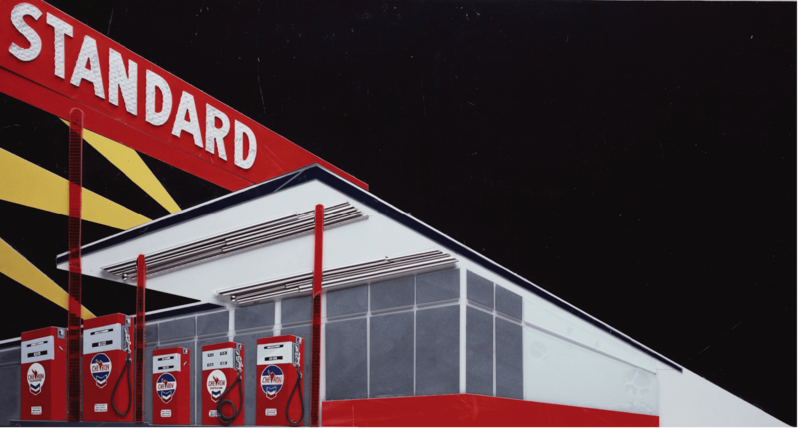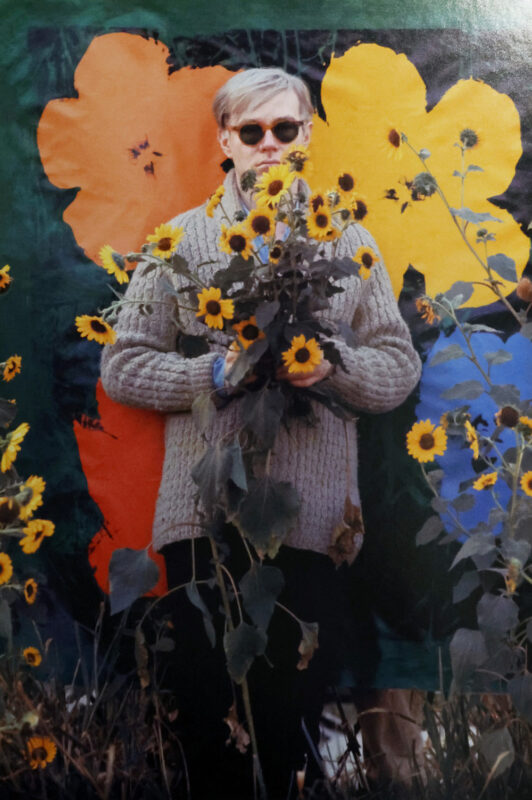![chris_burden[2]](https://fadmagazine.com/wp-content/uploads/chris_burden2.jpg)
Image:CHRIS BURDEN You’ll Never See My Face in Kansas City
Morgan Gallery, Kansas City, Missouri, U.S.A; November 6, 1971
Relic: ski mask Collection: Gilbert and Lila Silverman, Southfield, Michigan
MoMA PS1 presents The Talent Show, featuring works by 18 artists in the First Floor Main Galleries Through to April 4th 2011. The exhibition is curated by MoMA PS1 Curator Peter Eleey.
In recent years, television’s reality shows and talent competitions have offered participants a chance at fame, while various kinds of Web-based social media have pioneered new forms of communication that increasingly allow us to present our private lives as public theater. During the same period, governments worldwide have asserted vast new powers of surveillance, placing unwitting “participants” on an entirely different kind of stage. Against this backdrop, The Talent Show examines a range of relationships among artists, audiences, and participants that model the competing desires for notoriety and privacy marking our present moment. Whether portraying seemingly benevolent partnerships or those that appear to exploit their subjects, many of the works in the exhibition animate the tensions between exhibitionism and voyeurism, and raise challenging ethical questions around issues of authorship, power and control.
For the classic 1970 MoMA exhibition Information, Adrian Piper (American, b. 1948) installed a visitor’s book on a pedestal, providing a pen and the instruction to “you (the viewer) to write, draw, or otherwise indicate any response,” with the disclaimer that “the information entered in the notebook will not be altered or utilized in any way.” Visitors filled seven notebooks over the 11 weeks of the show with a range or responses, including political slogans, statements of rebellion and resistance, and declarations of love and artistic identity (“I hereby claim to be an included artist in this show as a result of my presence as justified by my signature”). Pointedly, a number of visitors wrote that they couldn’t write what they wanted because they were being surveilled.
![gillian_wearing[3]](https://fadmagazine.com/wp-content/uploads/gillian_wearing3.jpg)
Image:GILLIAN WEARING, I Signed On and They Would Not Give Me Nothing from Signs that say what you want them to say and not Signs that say what someone else wants you to say, 1992-1993 chromogenic print mounted to aluminum. 16-1/2 x 11-3/4 in. Collection Walker Art Center. Gift of Richard Flood, 2006 Image reproduced courtesy Maureen Paley, London and Regen Projects, Los Angeles
Piper’s invitation finds an echo in London in the early 1990s, when Gillian Wearing (British, b. 1963) approached strangers with markers and posters, suggesting that they write whatever they wished and then pose for a portrait with the poster. Wearing’s Signs that say what you want them to say and not Signs that say what someone else wants you to say (1992–1993) gave her subjects a voice, inviting them to participate directly in the creation of their own image. Some 30 years earlier, Stanley Brouwn (Dutch, b. 1935) had also approached passersby on the streets of Amsterdam, but he was asking them for directions. He later signed the sketches people helpfully drew for him as his own artworks, calling into question whether he was in some way misusing these drawings or taking advantage of those who had unknowingly created artwork on his behalf. John Smith (British, b. 1952) takes this one step further in his 1976 film The Girl Chewing Gum, in which the narrator seems to direct the actions of people passing before his camera on the street.
Sophie Calle (French, b. 1953), who has both stalked strangers and had herself stalked by a private detective, undertook a particularly invasive project in 1983 that provided a window into the life of an unwitting man whose address book Calle had found in the street. She returned it to him, but only after photocopying every page. Over the next month, she contacted people listed in the address book and interviewed them about its owner, publishing summaries of these conversations in a daily Paris newspaper. The ways in which these works model control and participation prefigure dynamics that animate a range of cultural forms that have proliferated in the past decade, as well as the concurrent rise in the collection and commercialization of personal information.
Two relics of early Chris Burden (American, b. 1946) performances offer a counterpoint to the publicizing of personal information represented by Calle. As part of a performance in Kansas City in 1971, Burden wore a ski mask during the entire duration of his visit. In another, he disappeared for three days, advising no one of his whereabouts or activities during that time. Burden’s counterperformances point to the ways in which people have variously resisted the coerced exhibitionism of popular culture, dropping out of society to go “off the grid,” and more recently, canceling their Facebook accounts.
Alternatively, Tehching Hsieh (Taiwanese, b. 1950)—who had illegally immigrated to New York in the 1970s and was living in fear of deportation—made a poster in 1978 in which he advertized his illegal status, and encouraged people to turn him in to the appropriate authorities if they saw him.
A vague sense of coercion lurks behind a recent work by Amie Siegel (American, b. 1974) that compiles and combines YouTube videos of many different people singing the same song. The singers—mostly performing in front of their computers at home—variously adopt poses and conventions from music videos, calling into question the supposed diversity of expression that such new cultural forms claim to elicit. An earlier form of the impulse that Siegel investigates is found in an Andy Warhol (American, 1928–1987) Screen Test that documents an unknown teenager who came by the Factory, one of only a handful of anonymous subjects in Warhol’s legendary project.
Several works bring the dynamics of viewer participation into real time in the exhibition space itself by directly inviting the audience to place themselves on view or watch as others do. David Lamelas’ (Argentine, b. 1946) Limit of a Projection I (1967), a simple theatrical spotlight illuminating a darkened gallery, is an implicit and alluring, if ambiguous, invitation. Similarly, those who elect to stand on the pedestal that comprises Piero Manzoni’s (Italian, 1933–1963) Base magica – Scultura vivente (Magic Base – Living Sculpture) (1961) are instantly elevated to the status of art. Peter Campus’ (American, b. 1937) Shadow Projection (1974) extends this performative invitation to the televisual realm, as visitors step into a spotlight, face a camera, and witness a sort of auto-eclipse of themselves. Through a simple construction, visitors’ exaggerated, oncamera images become visible only in the shadow of their real selves.
Expanding upon the questions begged by Campus’ installation, Hannah Wilke’s (American, 1940–1993) final work, produced after her death, explores the space between our private lives and what we show to the world. Wilke, who died of lymphoma in 1993, recorded her life during its last two-and-a-half disease-ridden years, compiling more than 30 hours of tape that were assembled posthumously into a 16-channel installation. Partly anticipating the world of reality television to follow, Wilke’s moving work urgently asks why, and under what circumstances, do we place or find ourselves on view? Moreover, what do we gain from such exposure, and how much control, freedom, and dignity are we willing to give up in exchange?
The artists featured in Talent Show are: Stanley Brouwn, Chris Burden, Sophie Calle, Peter Campus, Graciela Carnevale, Phil Collins, Philip-Lorca diCorcia, Tehching Hsieh, David Lamelas, Piero Manzoni, Adrian Piper, Amie Siegel, John Smith, Andy Warhol, Gillian Wearing, Hannah Wilke, Shizuka Yokomizo, Carey Young.









